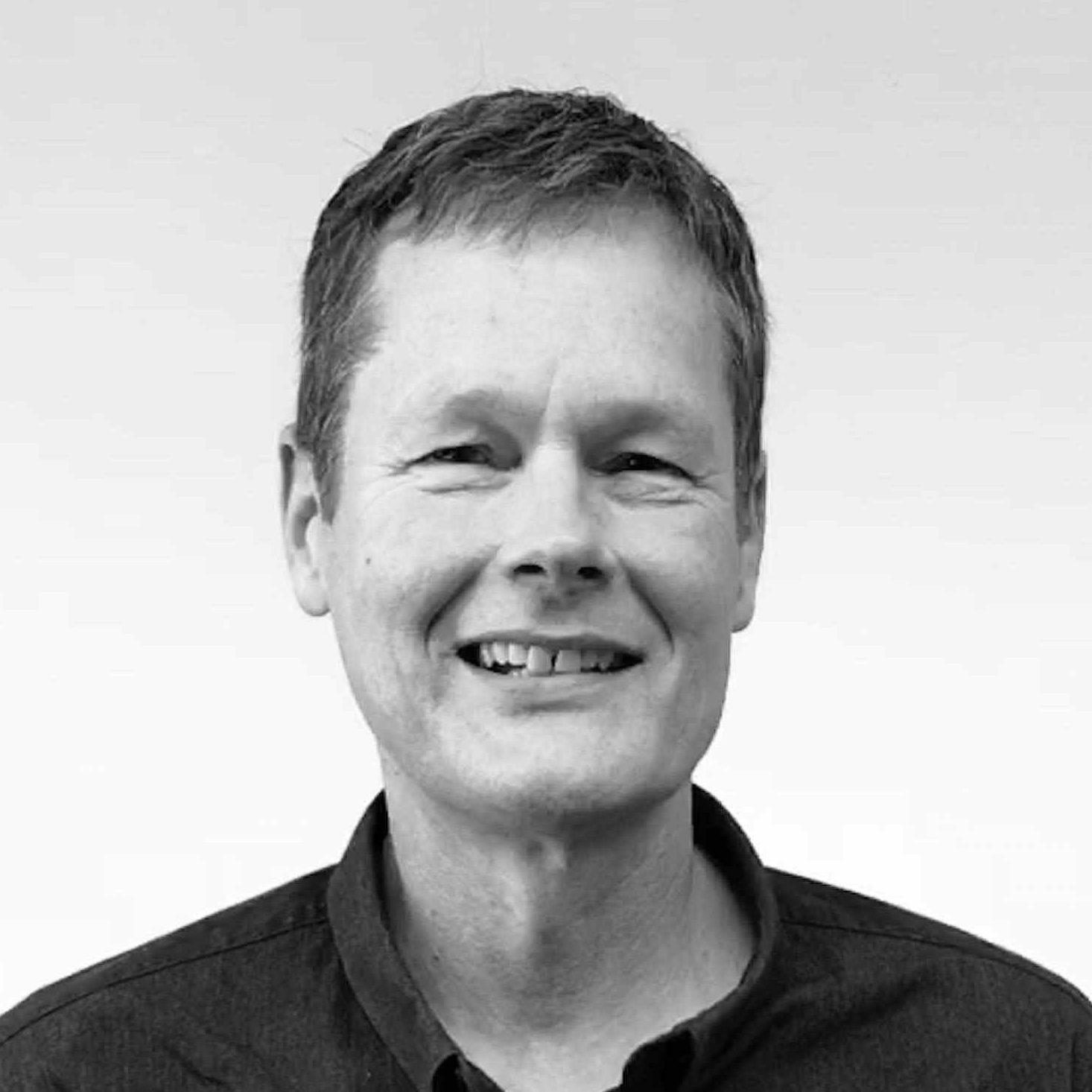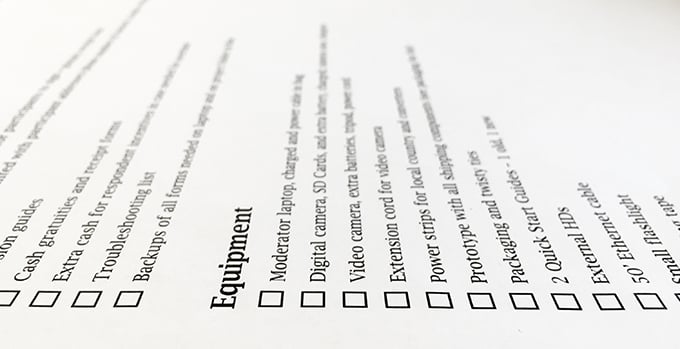
By
John Dirks
Part 1: Logistics
We user researchers often find ourselves in unusual places doing unusual things: in homes watching strangers set up media equipment, in passenger seats noting how drivers use in-car technology, in manufacturing settings observing CAD/CAM fabrication, in hospitals interviewing medical staff, just to name a few. The common thread is that we are out in the field observing behaviors of interest, frequently in other cities or countries, and the logistics involved in getting us out there can get complicated.
Gearing up for a field study differs from testing or interviewing in a usability lab or focus group facility in several important ways. This article discusses issues that streamline or complicate logistical complexity.
What are you trying to accomplish?
One of our mantras in UX consulting is “begin with the end in mind,” and the seemingly simple question “What are you trying to accomplish?” impacts logistics in major ways. Are your field visits aimed at gaining a quick understanding of a situation and then moving on, or are you trying to observe, document, and analyze complex situations in the “real world” and then report out findings to inform a large design effort involving many people? Is your work informing incremental change or a completely new initiative that requires understanding many different human and contextual factors?
What are you taking with you?
Are you taking any prototypes for field testing or specialized data collection tools? We have done out-of-box experience studies where we needed to take along backups of every part, including packaging. Depending on the size of the items tested and the research location, this can mean paying extra baggage and carting a lot of equipment around. If prototypes are highly confidential, you may need to ask the TSA and customs agents in other countries to do a confidential baggage search behind a curtain or closed doors. While this can be nerve-wracking at times, it also takes on a James Bond quality that can be fun and exciting.
How big is your team?
We typically involve two to three people in each field research team: the researcher and a client observer and/or a field assistant who handles video and audio recording and assists with any setup or teardown. We worked on one project that involved visiting 40 homes in each city visited, so we formed multiple teams of two people each working simultaneously to do all of the field interviews and data collection over a relatively short period. Multiple teams require multiple sets of equipment and getting everyone in sync on how research and data collection is to be conducted to ensure consistently high quality — this can get complicated with multiple players involved.
What does your recording footprint look like?
If you’re doing stakeholder interviews in the field to get a sense of the stakeholder’s environment, all you may need is a smartphone or portable audio recorder to capture the interview and take a few photos. But if you need high-quality video clips or photos of people, contexts of use, or processes that you might need to take into conference rooms to show executive decision-makers, count on taking multiple video cameras, higher quality digital cameras that can take decent photos in low light, and someone with the videography and photography skills to use them. We sometimes stream research sessions from homes or offices (with participant consent, of course). While field recording equipment continues to get better and smaller, it’s not uncommon to end up lugging around a large Pelican case of recording equipment, tripod(s), and a high-end laptop to capture multiple camera feeds and live stream a session. If you have multiple teams, it’s a great idea to use the same equipment with each team.
Where are you going?
It seems far easier to load equipment up in a car for site visits in your own city than it is to travel halfway around the world, but it’s inevitable during these “easy” visits that you forget an important item, you misjudge traffic, or an observer calls at the last minute and cancels because she is stuck in a meeting in her home office or her child is sick. Sometimes it’s better to go to another city to do field research simply because the distractions of home are less likely to get in the way!
Travel arrangements and documents
It’s easy to underestimate the time involved in arranging flights, hotels, and rental cars, especially if you are considering not just your own needs and schedule, but a client’s as well. I like to arrange my own travel (or hover over someone else who is arranging it) so I can avoid tight connections, maximize preferred airlines and hotels when costs are equal, and with some Ninja travel planning, minimize Bad Dad scenarios such as missing birthdays, piano recitals, and the like.
For in-home research, I usually rely on a recruiting partner in another city to tell me the best neighborhood or hotels to stay in to reduce driving time, but that’s sometimes a gamble if they have not yet recruited. Consider adding a half-day or so at the end of the research to do fill-in sessions if required. This usually does not add much cost to a project (if any), it ensures quotas are filled, and at worst you might spend a morning working in a hotel room. At best you might have an extra few hours to enjoy an interesting new place.
Check your passport if you’re traveling internationally to make sure it’s not about to expire. Some countries, like Brazil, require a business visa to do user research, and it can take up to several weeks and numerous forms and letters to obtain one, so start early. Most places we go for commercial research do not require vaccinations. If in doubt, sites like the Centers for Disease Control and Prevention (CDC) Traveler’s Health website show the latest requirements.
Pack your own parachute
Just as experienced skydivers pack their own parachutes, I like to pack my own field equipment or at least unpack and assemble it all again before the fieldwork begins. I know if I show up in a participant’s home missing a critical cable, camera, or part of a prototype, I will be the one who looks bad, not our IT staff or anyone else from the office who has helped me get ready.
The power of field checklists
Even if you have field research superpowers, keeping and reviewing checklists are keys to success. I list out all field equipment, paperwork, and compensation packets needed each day in the field as well as specific steps I need to go through each evening such as uploading photos and video, charging batteries, reviewing recruiting grids, and looking at travel distances and times to prep for the next day. Keeping checklists can help streamline activities and free up your mind to concentrate on more important stuff, such as noting key events observed during that day’s field sessions or identifying important patterns of behavior.
To carnet or not carnet?
Carnets are international customs documents that allow you to carry equipment such as video recording equipment or prototypes into and out of member countries without paying import or other duties. We have used ATA carnets for some studies but not in others. The carnet documents track specific materials you are carrying or shipping by model and serial number to make sure you take out of the country what you are taking in. In theory they simplify customs and prove to customs officials that you are not attempting to profit by importing and reselling expensive technical equipment. Carnets can be somewhat expensive, $250-$350 each, which really adds up if you have multiple items or sets of equipment.
Even after numerous international trips involving schlepping field-testing equipment and prototypes across borders, I’m not convinced carnets are necessary for most user research projects these days, and reactions to them when moving through borders can be mixed. An older European customs agent once told one of our researchers, “It’s a good thing I am on duty today. The younger staff do not even know what to do with carnets.”
Part Two
This article introduced several logistical questions and issues that we address when gearing up for user research studies in the field. Getting team members and equipment into and back from various locations and situations is just one aspect of conducting more complex UX research projects. The next article in this series will discuss some of the ways we go about forging UX partnerships with participant recruiters, research firms, and individuals in other cities and countries where some of our client projects take us.
John Dirks is a Partner at Blink UX, conducts a variety of user research projects, and has visited so many homes for work that he now claims it’s not real user research unless you can smell what’s for dinner.



